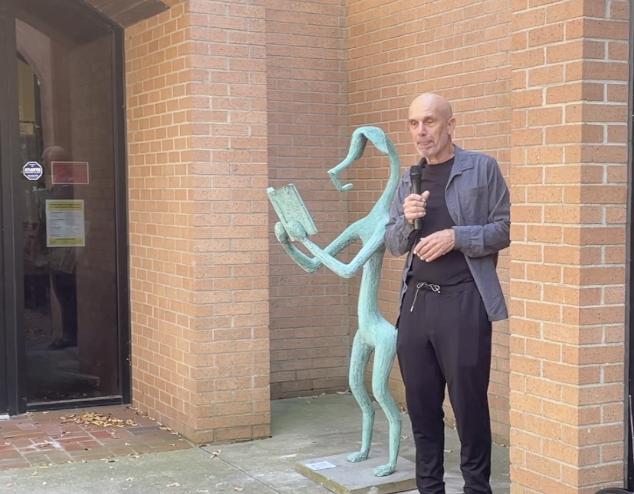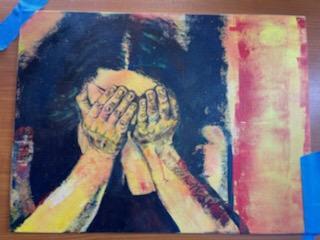The first of twenty-four sculptures donated by Peter and Hanna Woicke of St. Michaels was unveiled Saturday at the Kent County Public Library.
Fitting for a community that supports the arts and loves its dogs, “Reading Dog” by Massachusetts sculptor Jay Lagemann is a fanciful, floppy-eared bronze canine standing on its hind legs and reading a book.
Arranged and curated by Chestertown Public Arts Committee, “Reading Dog” is the first of eight outdoor pieces to be strategically placed throughout the community by the end of the year. The remaining sculptors will arrive over the next two years.
Chestertown Arts and Entertainment District, Chestertown Town Council, Mayors Cerino and Foster, and County Commissioners promoted the public arts initiative, an idea inaugurated by former Washington College professor and artist Alex Castro who brought the stainless steel wave “Broad Reach” to Wilmer Park in 2107 as part of the Chestertown’s Public Arts Master Plan.
Quoted in a 2021 Spy article, Kent Cultural Alliance Director John Schratwieser said the collection is a once-in-a-lifetime opportunity for a small rural community. “The artists are diverse in every sense, and the long-term benefits for the people of Chestertown and Kent County are many. Having a public art trail for students to learn from, seniors to interact with, and visitors and residents alike to enjoy, is just a win for all.”
Chair of the Public Arts Committee Ben Tilghman opened the ceremony and introduced sculptor Jay Lagemann.
Lagemann said that the sculpture was inspired by making wax figures of dogs for his children. Observing their glee, he thought a large rendering of one of the dogs would evoke the same reaction.
Proving to be true, the whimsical canine caught the attention of the Woickes and, until it’s installation in Chestertown on Saturday, the sculpture graced their lawn in St. Michaels for a decade.
“The Public Arts Committee feels that these sculptures will deepen and enrich this idea that Chestertown as a community that supports arts, that has working artists that are here for the benefit of everyone in the community,” Tilghman says.
This video is approximately five minutes in length. Photography by Elizabeth Healy. For more about Chestertown Public Arts, see their new website here








